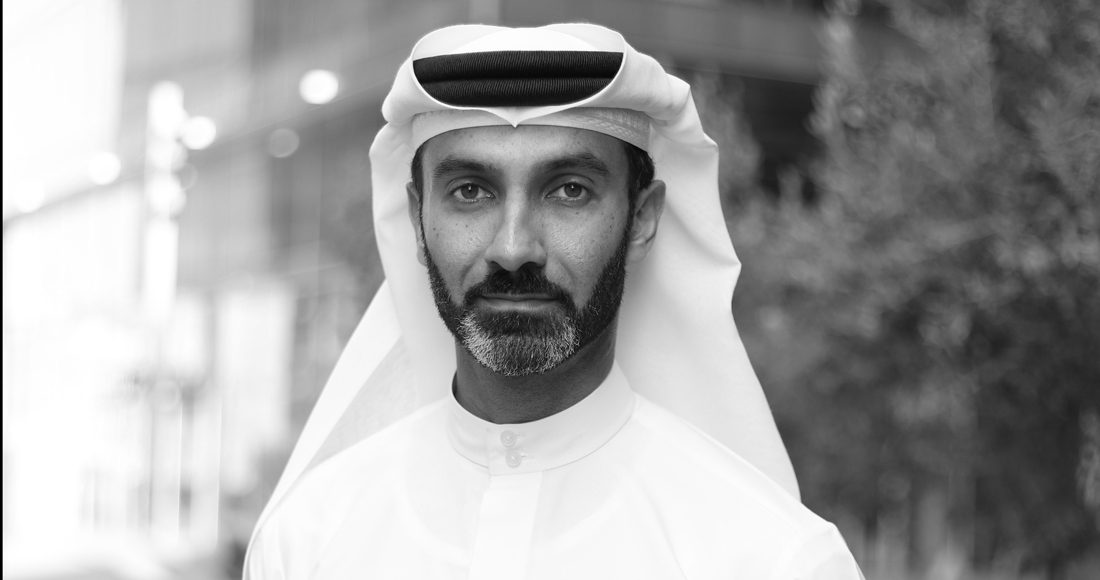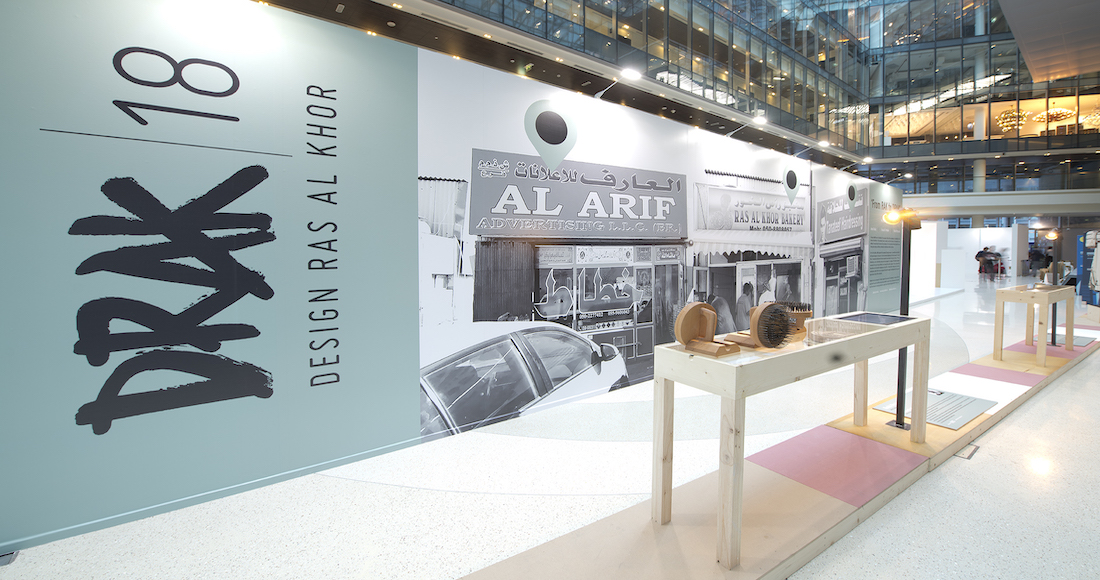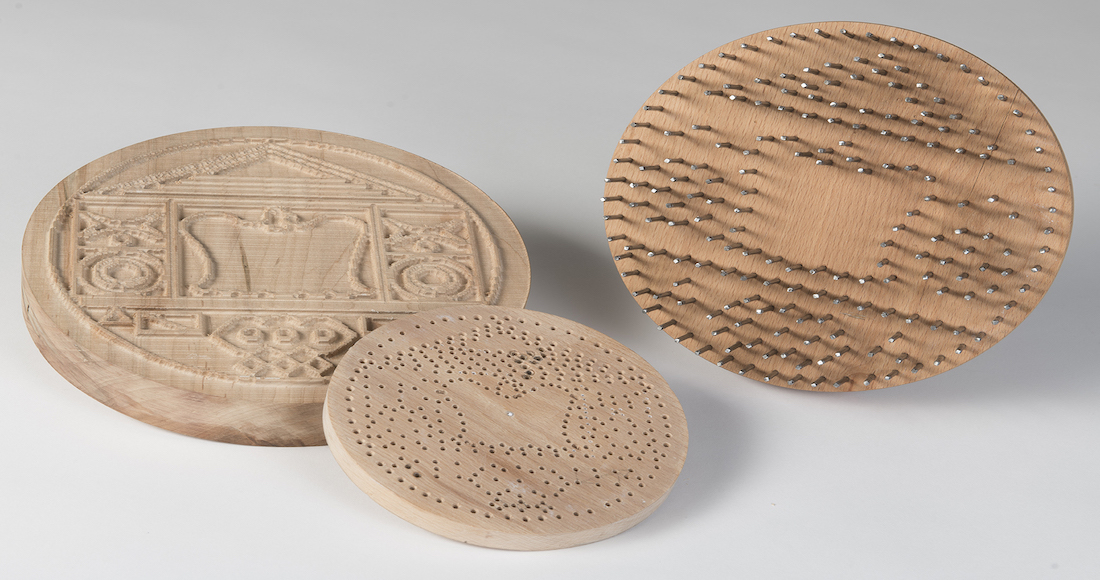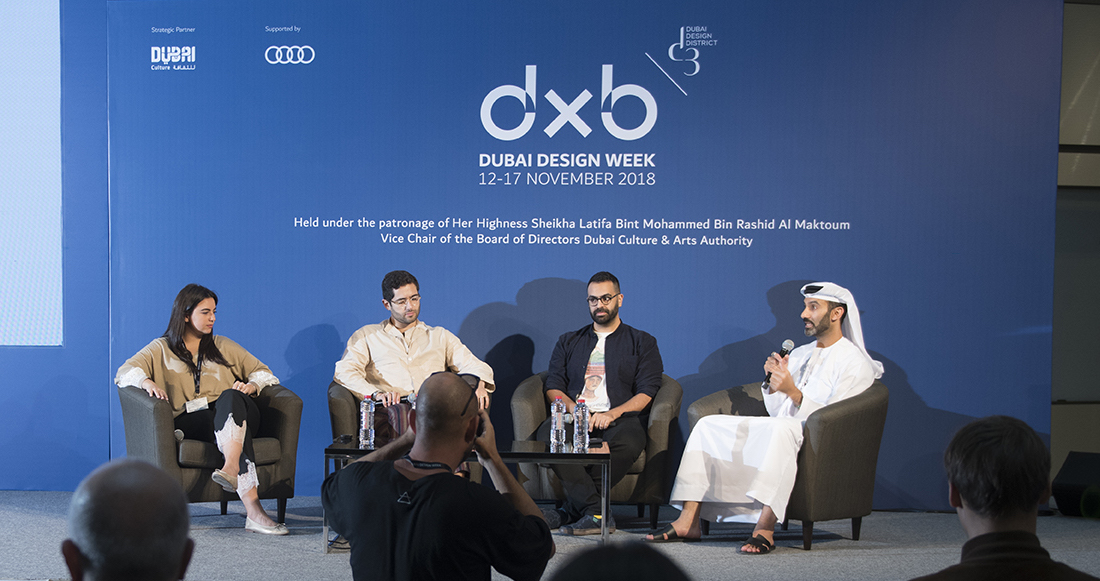Copyright © 2025 Motivate Media Group. All rights reserved.
DRAK: re-thinking community
Khalid Shafar reveals what inspired this year's show.

Still recovering from Dubai Design Week, we finally took a moment to catch our breathe and discuss this year’s DRAK exhibition ‘From RAK to DRAK’ with one of its founders, designer Khalid Shafar. This year they explored the community of Ras Al Khor by highlighting the intricacies of their daily life via three commercial outlet: a bakery, a barbershop and a calligraphy and advertising shop.
Each outlet was assigned a designer to research the day-to-day activities, observe the interactions and transactions happening, and use the collected data to design a contemporary object of use to that outlet. Amal Haliq looked at the barbershop, Faissal El-Malal the advertising and calligraphy shop and Khalid Mezaina at the bakery. The designers were also encouraged to further research the area and its community, interact with its people in order to have a real experience that helps them in the design process and to envision products or projects that reflect and support the DRAK18 design topic.
How did you decide which people and commercial entities (bakery. barbershop advertising shop) were going to be involved this year?
As the DRAK platform was established by 3 co-founders: Khulood Thani, Nadine Kanso, and myself, it’s always a discussion we conduct ahead of time to decide on the design topic of the year and accordingly we shortlist the designers we want to invite for the edition based on their backgrounds and design disciplines. We ensure through each edition to tap as much as we can on all creative sectors and include most disciplines in the platform through the years.
What was your biggest concern about this year? Your biggest challenge?
The lack of funds and sponsors was a major challenge this year. As a non-commercial platform, we depend and rely on support from institutions and sponsors to realise each edition and spread the opportunities to as many as we can. Such support assist in growing this platform and sustain its existence for the upcoming editions during Dubai Design Week and beyond.

DRAK items on display during Dubai Design Week.
How do you think DRAK is continuing to redefine the idea of community – ‘authentic’ vs ‘inauthentic’ – in general and also, specifically, the idea of the ‘design’ community in Dubai?
A community within any area shares same values, use common amenities available to them, exchange and communicate, and create a living system that all adapt to. Ras Al Khor being an industrial area and a work environment in one side, is a living environment for many on the other side. Through this year’s DRAK edition, we wanted to highlight this living part of the community beyond their working hours and spaces. Where they go, how they spend their times, and what they do. Regardless of the operations and inhabitants, this is generic to all areas and communities being design, financial, educational, or industrial.
How do you think each work interconnects? Did they discuss what they were going to create/display before the exhibition?
Sure they did as this was a mandate of the participation that each designer submits a proposal that respond to the design topic agreed for the edition and according to our (co-founders) review and based on our experience and insights we approve projects or ask designers to revise and edit. We ensure that all projects communicate and respond to the design topic in different ways that reflect uniquely its designers.
What was your biggest surprise in terms of the reception to this year’s exhibitions?
It was a pleasant surprise to witness the increasing interest from visitors to know more about Ras Al Khor Industrial and for DRAK to build deeper awareness of what the area has to offer beyond its wild life sanctuary and rigid factories.

‘Breaking Bread’ by Khalid Mezaina
What is your favourite object from each designer this year?
I believe each designer had responded perfectly to this year’s topic that made each project and outcome very unique. It’s very difficult to favor one over the other but personally the one project that I believe had integrated the community well while paid back to it is ‘Breaking Bread’ by Khalid Mezaina. His bread stamps were created out of necessity and deep observation while he promised all bakers he worked with to gift each a stamp that they could continue to use for the future. This was very kind gesture that I personally appreciate and glad to see a DRAK project that will be in use within the community.

Amal Haliq, Faissal El-Malal Khalid Mezaina and Khalid Shafar during their panel discussion during Dubai Design Week
The Latest
Textures That Transform
Aura Living’s AW24 collection showcases the elegance of contrast and harmony
Form Meets Function
Laufen prioritises design, functionality and sustainability in its latest collections
Preserving Culture, Inspiring Creativity
Discover the Legacy of a Saudi Art Space: Prince Faisal bin Fahd Arts Hall explores the Hall’s enduring influence on the cultural fabric of Saudi Arabia
Channelling the Dada Spirit
Free-spirited and creative, The Home Hotel in Zurich injects a sense of whimsy into a former paper factory
id Most Wanted- January 2025
Falaj Collection by Aljoud Lootah Design
Things to Covet in January
identity selects warm-toned furniture pieces and objets that align with Pantone’s colour of the year
Shaping the Future of Workspaces by MillerKnoll
Stacy Stewart, Regional Director Middle East & Africa of MillerKnoll discusses the future and evolution of design in workspaces with identity.
Shaping Urban Transformation
Gensler’s Design Forecast Report 2025 identifies the top global design trends that will impact the real estate and built environment this year
Unveiling Attainable Luxury
Kamdar Developments has launched 105 Residences, a new high-end development in Jumeirah Village Circle.
The Muse
Located in the heart of Jumeirah Garden City, formerly known as ‘New Satwa’, The Muse adds to the urban fabric of the area
Cultural Immersion Meets Refined Luxury
The Chedi Hegra opens its doors in AlUla’s UNESCO World Heritage Site
Redefining Coastal Luxury
Sunshine Bay on Al Marjan island combines seaside views, exceptional design, and world-class amenities to create a unique waterfront haven
















